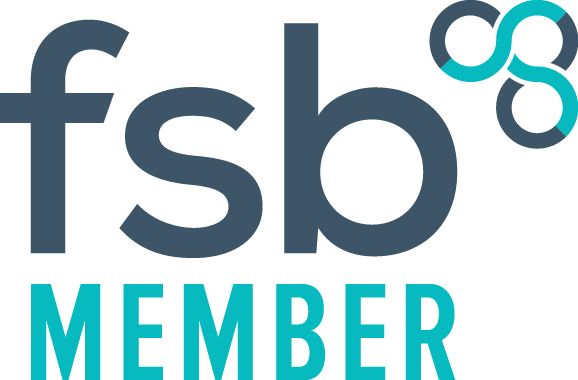Cloud FinOps
Introduction
With cloud adoption reaching unprecedented levels, businesses are leveraging cloud computing to drive innovation, scalability, and operational efficiency. However, with this growth in cloud usage comes a new challenge: managing cloud costs effectively.
Enter Cloud FinOps, a strategic approach that combines financial management practices with operational insights to help organisations maximise the value of their cloud investments.
As cloud infrastructure spending becomes a significant part of IT budgets, the need for cost optimisation is greater than ever.
What is Cloud FinOps?
Cloud FinOps, short for "Cloud Financial Operations," is a set of practices that combine finance, technology, and operations to help organisations gain better visibility and control over their cloud spending.
In essence, Cloud FinOps is a cultural and organisational movement that aims to foster collaboration between finance, IT, and business units to make data-driven decisions about cloud usage and costs.
Cloud FinOps is built on three core principles:
1. Visibility: Ensuring that cloud costs are transparent and visible to all stakeholders.
2. Optimisation: Continuously identifying and acting on opportunities to reduce costs.
3. Accountability: Promoting shared responsibility for cloud costs across the organisation.
Unlike traditional IT financial management, Cloud FinOps adapts to the dynamic and variable nature of cloud spending, allowing businesses to respond in real-time to usage patterns and billing changes.
Why is Cloud FinOps Important?
As companies increasingly shift to the cloud, cloud cost management has become a critical part of financial strategy.
Without proactive management, cloud expenses can quickly spiral out of control, eating into budgets and reducing profitability. Cloud FinOps provides a framework to prevent this by enabling organisations to:
1. Optimise Cloud Spending: Cloud FinOps enables businesses to make smarter decisions about cloud resources, helping them reduce unnecessary costs while still supporting growth.
2. Increase Financial Transparency: With detailed visibility into cloud usage and costs, departments are better able to forecast budgets and understand the impact of their cloud spending on the bottom line.
3. Drive Accountability Across Teams: Cloud FinOps fosters a culture of accountability, where each team takes ownership of its cloud costs, ensuring responsible usage and preventing unnecessary expenditures.
4. Support Agile Business Growth: The cloud provides flexibility and scalability, but unchecked usage can be costly. Cloud FinOps helps businesses scale efficiently, ensuring cloud resources are used optimally and effectively.
Key Components of Cloud FinOps
To implement Cloud FinOps effectively, organisations need to focus on three main components:
1. Cloud Cost Visibility and Transparency
The first step in Cloud FinOps is establishing visibility and transparency into cloud spending. Detailed visibility helps organisations track cloud costs by service, department, application, and project.
Using tagging and cost allocation methods, organisations can map cloud costs back to specific teams and usage, making it clear where the money is going and identifying areas where spending can be optimised.
Tools for Cloud Cost Visibility:
• Cloud provider cost management tools (AWS Cost Explorer, Azure Cost Management, Google Cloud Cost Management)
• Cloud management platforms like CloudHealth, Cloudability, or Spot by NetApp
• Custom dashboards and real-time alerts for tracking costs and usage patterns
2. Cost Optimisation and Automation
Cost optimisation in Cloud FinOps involves reducing cloud costs through techniques like rightsizing, scheduling, reserved instances, and spot instances.
Rightsizing, for example, ensures that workloads use the right type and size of instances, reducing wasted capacity. Similarly, scheduling can automatically shut down non-essential resources during off-hours to save on costs.
Many organisations are also leveraging automation to enhance optimisation. Automation can be used to scale resources up and down based on demand, enforce tagging policies, and even automatically switch to lower-cost instances where possible.
Optimisation Strategies:
• Rightsizing: Regularly evaluate instance sizes and types to match the specific needs of applications.
• Spot Instances and Reserved Instances: Use spot instances for short-term workloads and reserved instances for predictable, long-term workloads.
• Automated Scheduling: Turn off non-essential resources during non-business hours.
• Lifecycle Policies: Automate resource cleanup to remove unused resources.
3. Establishing Accountability and Collaboration
A core principle of Cloud FinOps is that cloud costs should be everyone’s responsibility. Traditionally, managing IT costs was the responsibility of a central finance or IT department, but in the cloud era, every team that uses cloud resources plays a role in managing their costs. Cloud FinOps encourages teams to take ownership of their spending and to make cost-efficient choices in their cloud usage.
Establishing accountability means setting up processes and guidelines that encourage teams to be mindful of their cloud consumption. This could include creating a "cloud cost champion" in each team, setting up cost budgets, and providing regular cost reports to team leads.
Methods for Accountability:
• Cost Budgets and Alerts: Set budgets for each team, with alerts to notify teams when they approach their limits.
• Cost Reviews: Schedule regular cost review meetings to discuss spending trends, identify optimisation opportunities and recognise cost-efficient practices.
• Showback and Chargeback: Implement showback (providing visibility of costs) or chargeback (charging costs back to teams) models to give teams direct visibility into their cloud spending.
Best Practices for Cloud FinOps Implementation
1. Develop a FinOps Culture Across Teams - Cloud FinOps is not just a set of tools, but a cultural shift that requires buy-in across the organisation.
By fostering a FinOps culture, businesses encourage collaboration and cost-conscious behaviour across all teams, empowering everyone to make cost-effective decisions about cloud usage.
2. Use Real-Time Cost Monitoring - Unlike traditional IT expenses, cloud costs can fluctuate significantly in real-time. Investing in real-time cost monitoring tools can help organisations catch unexpected cost spikes early, enabling them to respond before expenses grow out of control.
3. Optimise Workloads Continuously - Cloud cost optimisation isn’t a one-time activity but an ongoing process. Regularly revisit and re-evaluate cloud configurations, instance types, storage options, and other resources to ensure they continue to align with current needs.
4. Forecast Cloud Costs and Set Budgets - Forecasting cloud costs based on historical data and usage patterns enables better budgeting and financial planning.
By setting budgets for each team or project, organisations can set clear cost expectations, helping teams stay within budget.
5. Invest in FinOps Training and Resources - Cloud FinOps can be complex, especially for organisations with multiple teams using various cloud services.
Providing FinOps training for finance, IT and business teams ensures that everyone understands the tools, techniques and best practices.
The Benefits of Cloud FinOps
Implementing Cloud FinOps brings numerous benefits, allowing organisations to optimise cloud spending and maximise the value of their cloud investments:
• Cost Control and Reduction: By continuously optimising cloud usage, companies can achieve significant savings, freeing up budgets for other strategic initiatives.
• Improved Forecasting and Budgeting: Cloud FinOps provides a structured approach to forecasting and budgeting cloud costs, leading to better financial planning and fewer surprises.
• Enhanced Collaboration: With Cloud FinOps, finance, IT, and business teams work together, fostering a collaborative approach to cost management and aligning cloud usage with business goals.
• Faster Decision-Making: Real-time data and insights empower teams to make faster, data-driven decisions, ensuring that cloud resources are used as efficiently as possible.
Conclusion: Cloud FinOps as a Strategic Advantage
In 2024, Cloud FinOps is no longer just an option for cloud cost management—it’s a strategic advantage for organisations seeking to maximise their cloud investments.
By combining financial discipline with agile, real-time cloud management, Cloud FinOps helps businesses control costs, improve visibility, and create a culture of accountability.
Cloud computing is an invaluable asset for innovation, scalability, and growth. However, it must be managed responsibly to avoid unexpected expenses and inefficiencies.
By implementing Cloud FinOps best practices, organisations can achieve a balance between financial management and operational agility, ensuring that every dollar spent on the cloud delivers maximum value.

"Green Catalyst" is the trading name of Green Catalyst Business Solutions
All services under Green Catalyst are provided through a UK Umbrella Company.
No services are directly delivered by Green Catalyst as a business entity.
© 2024 Green Catalyst. All rights reserved.
Before you Go!
our new blogs, products & offers.
